This Dystopia SUCKS!!
- Corrina Crazie Espinosa
- Jan 13, 2022
- 11 min read

"Anonymous is just an idea, anyone can partake."~
Using real world societal problems (something in our world that is broken) as your inspiration, create a person, group, or political machine to address the issue. Make a series of glitch art to visually communicate criticisms, celebrations, questions or suggestions around your cohesive theme. Make a series of 16 stills, 5 gifs, and 1 short (datamosh) video (1 min or less). The final step will be to give this an actual voice in the real world by making a twitter account to post the images on and a twitter bot so it can continue to tweet on the topic long after you move on. I will show you a variety of glitch techniques and you come up with the concept. Make something that is smart, clever and aesthetically glitchy!
So what is Glitch Art?
Glitch in its natural habitat

The technical term "glitch" means: a sudden, usually temporary malfunction or irregularity of equipment. These are glitches that occur spontaneously, and are sometimes found, observed and captured. For most people, when their computer, tv, or other tech device glitches it is a source of irritation-- it's not working properly. However, there are groups of people who appreciate the aesthetics of these glitches and find these unique experiences to be quite satisfying. There are even online communities of people who love to capture these highly coveted "naturally" occurring glitches and post them in group collections. For example a group on Flickr called Glitch Safari where there focus is specifically on the collection of "found glitches in public spaces," as opposed to glitches that art made, or created by human hands. The group description explains, "Displays will glitch in our modern, urban landscape. These occurrences generally go unnoticed by society or are ignored as technological failure. Glitch Safari is a group that sees the magical quality in these sometimes fleeting instances and celebrates their aesthetic as machine art. We're on the hunt for glitches from across the globe! Post pictures and videos of glitches found on displays, signs and machines. Please geo tag your submissions and, for more points, add a description of where you found it."

Glitch Art
Glitch art is the practice of creating intentional flaws in sound, image, video and other files (such as jpg, wav, etc.) for creative purposes. Artists intentionally break the file just enough to achieve surprising and serendipitous aesthetic outcomes, but not too much so that the file is no longer functional enough to open/play. It's a delicate balance of corruption. Here is a link to the original Glitch Studies Manifesto written by Rosa Menkman.
Some awesome examples of glitch art and artists:
Glitchbot - "GlitchBot is an automated glitch creation / distribution program and persona. GlitchBot maintains an active presence on flickr, including a profile and photostream, with new images created and uploaded daily. GlitchBot is not an interactive program. GlitchBot works alone on a fixed schedule, creating a single new glitched image every day and presenting it to the world via the GlitchBot flickr page." Created by Ben Baker-Smith. Here we see the human artist, who made the machine, who makes the glitch art.
Hugh S. Manon - Hugh Manon is an artist and Associate Professor and Director of Screen Studies and Director of Media, Culture and the Arts at Clark University, Worcester, Massachusetts.
Rob Sheridan - Rob Sheridan is an artist, art director, writer, designer, illustrator, photographer, director, and editor residing in the pacific northwest. He has done creative work for nine inch nails, trent reznor, how to destroy angels, dc comics, beats music, hbo, bbc america, sony pictures, sony music, interscope records, universal music, capitol records, veto, the grammys, david fincher, heavy metal magazine, mit technology review, 42 entertainment, cloak and dagger, spaceland, dr dre, peter murphy, puscifer, phantagram, L7, zedd, the black queen, the new regime, black rebel motorcycle club, and various print publications.
Rosa Menkman - Rosa Menkman is a Dutch researcher and artist. Her work focuses on noise artifacts that result from accidents in both analogue and digital media (such as glitch, encoding and feedback artifacts). Most recently she was awarded an art residency at CERN, an amazing accomplishment and amalgamation of art and science.
Some Art and inspiration to consider:
Artist Inspiration:

For several months, Ulman conducted a scripted online performance via her Instagram and Facebook profiles. As part of this project, titled Excellences & Perfections, Ulman underwent an extreme, semi-fictionalized makeover. Some of the things she posted were true, like her following a strict diet and attending regular pole dancing lessons. But most of what she posted was fiction, for instance she pretended to get breast augmentation surgery and posted pictures of herself in a hospital gown. The images were actually taken during a routine visit to her gynecologist. She also posted food she didn't actually eat, products she didn't actually buy and other personal encounters that never happened but all told the story that she believed is desired from social media influencers. She used memes and intentional misspelling to emphasize her fictional personality. Gallery representatives begged her to stop, she was soiling her reputation as a serious artist. She even feigned a breakdown, a low point for people to spy on where she supposedly checked herself into a rehab, followed by days of silence when she was supposedly not able to access technology, and concluding with a heartfelt apology for her actions and a promise to do better. None of this actually happened.

"I wrote a story in pictures, the cute girl..."

"The sadder the girl, the happier the troll..."

In creating this project she was praised and admired, but also suffered abuse, criticism for seeming to promote unrealistic body standards, she was the target of cheap flattery, dick pics, and obscene propositions. Her close friends were often confused, unable to demarcate the Ulman of social media as a separate fiction, even when she would try to explain the project away from the keyboard. By repeating a lie for three months, she created a truth that she was unable to dismantle. Her friends and family were confused and concerned, even after explaining the project to them in person they had difficulty distinguishing fiction and reality.
"By repeating a lie for three months, she created a truth that she was unable to dismantle."
Nikki S. Lee
Nikki S. Lee was born in Kye-Chang, Korea, and immigrated to the United States in 1994. She graduated from the University of Korea, studied at the Fashion Institute of Technology, and received her master’s degree from New York University.

In her photo series from the 1990's titled Projects, Lee repeatedly transformed herself into a whole new person through dress, makeup, gesture and posture and taking on the characteristics, of often stereotypical groups like "Midwesterners, Yuppies, Hispanics, hip hoppers, swing dancers, senior citizens, lesbians," etc. By spending time with the group, socializing and interacting with them she assimilated herself, until she actually became a part of the group. Then she would have a friend or group member shoot low quality pictures with a cheap, automatic snapshot camera. Not professional, staged photos, but casual and natural shots with her and her new set of friends. Lee uses this process to investigate social behavior and the characteristics of other peoples identities. She literally took a walk in someone else's shoes to see what it was like to live like them, to be them.

Although Lee’s works are held in collections including the Museum of Contemporary Art, Los Angeles; the Metropolitan Museum of Art; and the Solomon R. Guggenheim Museum. However, her work is also highly criticized and considered to be extremely controversial. Lee’s work was made during a different time, before people became aware to the sensitivity of cultural property and subtle racism, and exploitation of gender and sexuality. Today, in a political climate dominated by racist apologetics, artwork addressing the identities of marginalized groups of people has become a far more sensitive topic. Cultural appropriation has become a heated topic, and there is a need to protect the voices of marginalized groups. Lee was using appropriation strategically to investigate issues of race, gender and sexuality so that she could understand them better. She infiltrated the groups with honesty about her performative art intentions, so the people she was interacting with knew what she was up to. As a Korean woman, Lee is also a person of color and could be considered a marginalized person as well, so her project is not coming from a place of privilege, but... She was literally wearing black face, and the questions remain-- is her work appropriate? Is her work an affront or a genuine attempt to make a connection? Does her work celebrate the cultures of other individuals or trivialize their plight and reinforce stereotypes? What do you think?
Jon Rafman
Jon Rafman made an Avatar for himself to explore an online virtual world called Second Life. Second Life is a free 3D virtual world where users can create, connect, and chat with others from around the world. It's like role playing, sims, social media and virtual reality all rolled into one. There is certainly some adult---and very strange content, so be forewarned. This is where fine art and crude humor collide!

"The video monitor shows the Kool-Aid Man wandering through 3-D digital worlds. The smiling red pitcher ambles through desolate urban landscapes, slides down a waterslide in a pristine Alpine landscape, swims under the sea, frowns next to a bloody corpse, interrupts two people screwing, dances to "Come on Eileen" at a bordello filled with triple-E-breasted hookers in fetish wear, and break-dances next to a furry man-wolf in a cock ring. Kool-Aid Man is Canadian artist Jon Rafman, and his video Kool-Aid Man in Second Life: Tour Promo Video, is on view at FotoFest in "Poke!: Artists and Social Media.""
KELLY KLAASMEYER| SEPTEMBER 23, 2009 - The Houston Press
This artist is super out their weird and pushes the boundaries on what is appropriate, but I thought it was a great example of giving life to an Avatar and setting them lose in the virtual world.
Here is another video, part of a series where he captures the most surreal instances in a these video dream journals. They are absolutely bizarre, and yet relatable and satisfying.
Anonymous

You could certainly call the hacker group known as Anonymous a political machine that has been digitally designed to address dystopian issues.
They do everything from hacking to disrupt dystopian society, to going out on the streets directly to feed the homeless.
Here is some info directly from Wikipedia:
"Anonymous is a decentralized international activist/hacktivist collective and movement widely known for its various cyberattacks against several governments, government institutions and government agencies, corporations, and the Church of Scientology.
Anonymous originated in 2003 on the imageboard 4chan representing the concept of many online and offline community users simultaneously existing as an anarchic, digitized global brain or hivemind. Anonymous members (known as anons) can be distinguished in public by the wearing of Guy Fawkes masks in the style portrayed in the graphic novel and film V for Vendetta. However, this may not always be the case as some of the collective prefer to instead cover their face without using the well-known mask as a disguise. Some anons also opt to mask their voices through voice changers or text-to-speech programs.
In its early form, the concept was adopted by a decentralized online community acting anonymously in a coordinated manner, usually toward a loosely self-agreed goal and primarily focused on entertainment (or lulz). Beginning with Project Chanology in 2008—a series of protests, pranks, and hacks targeting the Church of Scientology—the Anonymous collective became increasingly associated with collaborative hacktivism on a number of issues internationally. Individuals claiming to align themselves with Anonymous undertook protests and other actions (including direct action) in retaliation against copyright-focused campaigns by motion picture and recording industry trade associations. Later targets of Anonymous hacktivism included government agencies of the United States, Israel, Tunisia, Uganda and others; the Islamic State of Iraq and the Levant; child pornography sites; copyright protection agencies; the Westboro Baptist Church; and corporations such as PayPal, MasterCard, Visa, and Sony. Anons have publicly supported WikiLeaks and the Occupy movement. Related groups LulzSec and Operation AntiSec carried out cyberattacks on U.S. government agencies, media, companies, military contractors, military personnel, and police officers, resulting in the attention of law enforcement to the groups' activities.
Dozens of people have been arrested for involvement in Anonymous cyberattacks in countries including the United States, the United Kingdom, Australia, the Netherlands, Spain, India, and Turkey. Evaluations of the group's actions and effectiveness vary widely. Supporters have called the group "freedom fighters" and digital Robin Hoods,while critics have described them as "a cyber lynch-mob" or "cyber terrorists". In 2012, Time called Anonymous one of the "100 most influential people" in the world. Anonymous' media profile diminished by 2018, but the group re-emerged in 2020 to support the George Floyd protests and other causes.
Hacktivism

What is hacktivism? If you google Hacktivism or hacktivist, this is the short answer that you will get:


These definitions are equally concise and broad enough to encompass the practice (of hacktivism) without restricting its vast perimeters. However, I will say that hacktivism goes well beyond the realm of computers and into the real world, and it can have a significant impact on the public.
One of the most well known examples of hacktivists are the Yes Men, "a culture jamming activist duo and network of supporters created by Jacques Servin and Igor Vamos." They use tactical media as an art practice, but more importantly as a tool for political, social and cultural change. The Yes Men's main goal is to bring attention and and make people more aware of social and political problems and corruptions. In order to accomplish this goal, they use performance as a medium to impersonate people who they perceive to be harmful or who participate in morally questionable behavior. Specifically, the Yes Men target corporate leaders and government figures who they perceive to act in "dehumanizing ways toward the public". They have come to call these performances "identity corrections". "The Yes Men operate under the mission statement that lies can expose truth."
"EAT SHIT AND LIVE" this is a cut from the first YES MEN documentary of a performance
The whole process begins with the creation of parody websites intentionally similar to the sites getting spoofed. The sites are similar enough to attract emails requesting interviews, offers to speak at conferences, and even on television. The video posted above is a scene from the first Yes Men movie. Through the entire performance the actors never break character and by the end of the whole ridiculous presentation, the students are literally booing and throwing things at them. Everything went exactly as planned because the Yes Men made their impact.
The Yes Men have collaborated with other groups of similar interest, including Improv Everywhere, Andrew Boyd and Steve Lambert. In the video posted below we see an example of "retail poisoning." Retail poisoning is similar to hacktivism, but it's specific task is to disrupt consumerism. Improv Everywhere does exactly that with this community performance that flips an average day at Best Buy into a disruption of mass confusion and frustration (on the part of Best Buy) that is nothing less than hilarious and exciting! A collection of retail poisoning based works appear on a tumblr, and consist of videos, recorded performances, sculptures pranks and other creative ways of disrupting the retail portion of corporate capitalism. Below are a few more examples:
Evan Roth, Available Online for Free stickers:


Jeff Wysaski's altered pet store labels:
Jeff Wysaski's altered book covers (changed and replaced on bookstore shelves)





Culture Jamming
Similar to retail poisoning, Culture Jamming aims to disrupt, but in this practice it's the media and corporations and institutions of mainstream culture and advertisements that falls victim. Here are some specific examples of culture jamming projects put out by various groups:

An example of billboard altered by the Billboard Liberation Front. Post Hurricane Katrina.
more examples:






Glitch Assignment Parameters:
This Dystopia SUCKS! Make a series of glitch art about your worst dystopian nightmare! 16 stills, 5 gifs, and 1 short (datamosh) vids 2 min or less). I will show you a variety of techniques, you come up with the concept. Make something that is smart, clever and aesthetically glitchy!
You must have:
1 consistent theme (a glitch in society, something in our world that is not working, or is just BROKEN)
16 still glitch images
5 gif glitch images
1 short (2 min. or less) datamosh videos
The Tools
There are many different ways to create glitch art, but they seem to fall under three major categories:
Accidental Glitch - a true manifestation inside of the system without human intervention, the machine is the artist (like what we saw in Glitch Safari).
Intentional Glitch - where the human causes errors in the file, code, codec, etc. but the results are still somewhat erratic, surprising and serendipitous.
Fake Glitch - that is, “faking glitch” and obtaining a similar aesthetic through design, basically imitating glitch in photoshop or some similar program.
Hybrid Glitch - any combination of 2 or more of the above categories.
Types of glitch we will explore:
Intentional Glitch via Misalignment:
Misalignment glitches are produced by opening a digital file of one type with a program designed for a different type of file, for example opening a jpg file in an audio or text editing program, or using the wrong codec to decompress a file. Tools commonly used to create glitches of this type include audacity (free multi platform software) and text edit.
We will be exploring:
Audacity (for both platforms)
Notepad++ (for Windows users) & Textedit (for mac users)
Intentional Glitch via Data Manipulation aka databending:
Data manipulation (aka databending) creates glitches by editing or changing the information or data inside of a digital file.
We will be exploring:
Hex Editor - Live on the web
Datamoshing - using Avidemux version 2.7.1 & VLC media player (both are free, available across platforms and also accessible through splashtop) as well as a simple online converter.
Fake Glitch
We will be exploring:
look mom I designed glitches (in Photoshop)
Glitch Gifs (in Photoshop)
Hybrid Glitch
We will be exploring:
Starting with intentional technique(s) of your choice, and touching/supplementing the design in Photoshop.
Questions?
Happy Glitching! Now let's BREAK SOME FILES!!



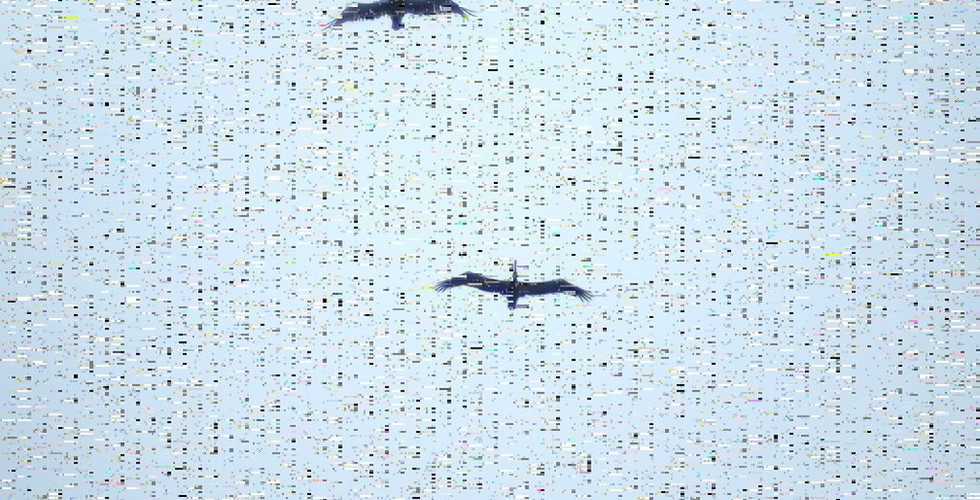
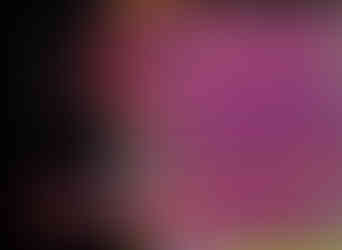


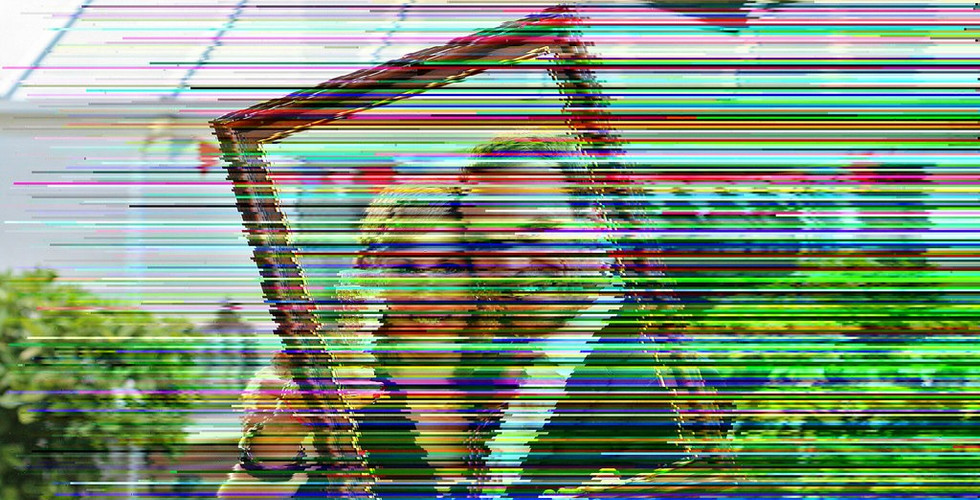




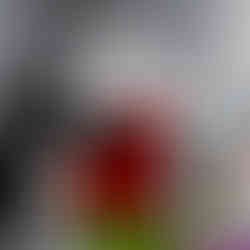










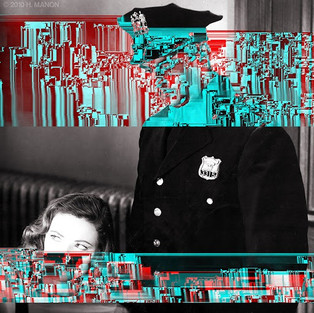

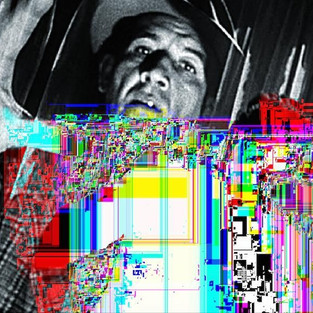





























































Comments